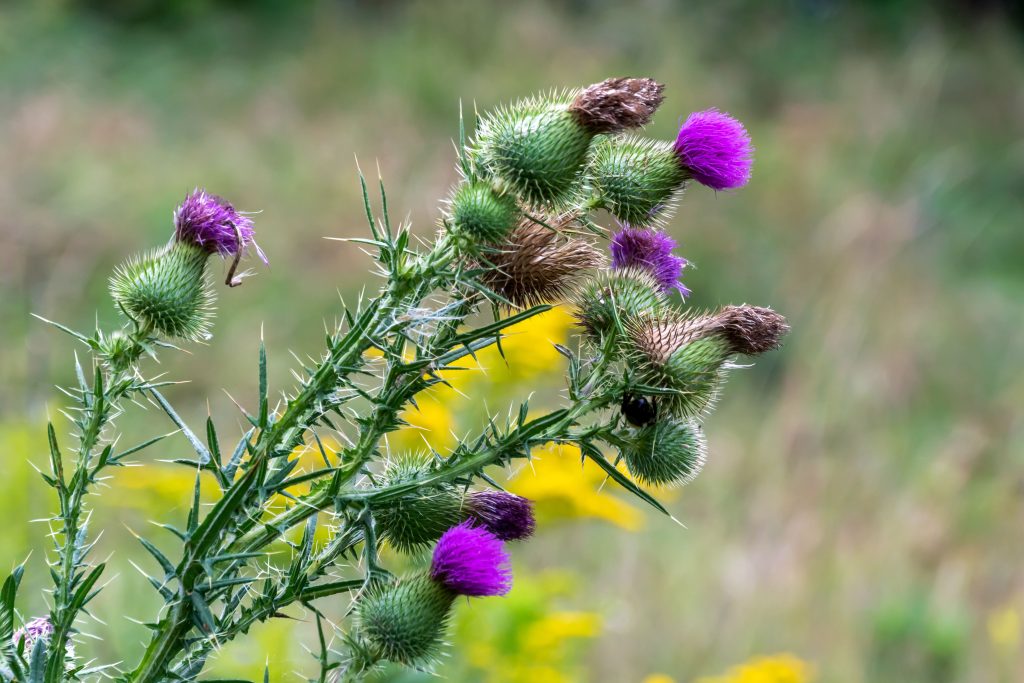
What are Noxious weeds?
Noxious weeds, or ‘invasive weeds’, are non-native plant species that tend to aggressively spread and disrupt natural ecosystems, agricultural lands, and other habitats. These plants have the ability to outcompete native vegetation, which negatively impacts biodiversity, ecosystem function, and economic activities. If you have ever tended to a garden or helped maintain the plant life surrounding your home, chances are you have come across some of these unwanted plants before. Thistles for example, tend to be a very prominent weed that will take over quite easily, and very fast. They (as well as other noxious weeds) can be very difficult to manage or eradicate.
Characteristics of noxious weeds can include:
- They are Non-Native:
Noxious weeds are introduced from outside their natural habitat. Typically, they make their first appearance due to people either unintentionally or intentionally bringing them or their seeds/pollen into an ecosystem. Some have even been used for decorative purposes, which is where they are intentionally introduced. - They grow rapidly and reproduce/multiply just as fast:
Noxious weeds have a high reproductive capacity and can spread very quickly as mentioned above. - Very aggressive and competitive with other plants:
Noxious weeds often outcompete native plants for resources such as sunlight, water, and nutrients. - Negative Impacts:
Noxious weeds can harm ecosystems, agricultural productivity, and human activities. They can reduce crop yields, degrade rangelands, impair water quality, hinder recreational activities, and impact wildlife habitat.
How to help prevent or get rid of noxious weeds:
- Prevention:
Efforts are already made at a higher level to help prevent the introduction and establishment of noxious weeds by regulating the import and trade of plants, seeds, and other materials.Some ways you can help prevent these unwanted plants from taking over your land include starting with clean soil, staying vigilant in removing any sprouting weeds immediately, using a proper mulching technique, and research what you’re planting to ensure you are not planting an invasive species.
- Integrated Weed Management:
This approach involves a combination of methods, such as mechanical removal, chemical control, biological control (using natural enemies of the weeds), cultural practices, and revegetation with native plants.It’s typically best to start with non-chemical measures as these can be harmful to you, other natural plants, and animals. It’s important to research adequately and ensure any chemicals used are used properly and directions are strictly followed.
It is important to actively manage and control noxious weeds to help protect our native ecosystems, agricultural lands, and natural resources, as well as to preserve biodiversity and the overall health of ecosystems.
One additional tip for both gardeners and farmers:
Be sure to dispose of noxious weed waste in a responsible manner. Bag and discard or compost weed material properly to prevent weed seeds from spreading. If this is not done properly, chances are these weeds will come back, and come back with a vengeance – that is, they will continue to grow and reproduce very quickly, and you will end up right where you started in trying to get rid of them.
